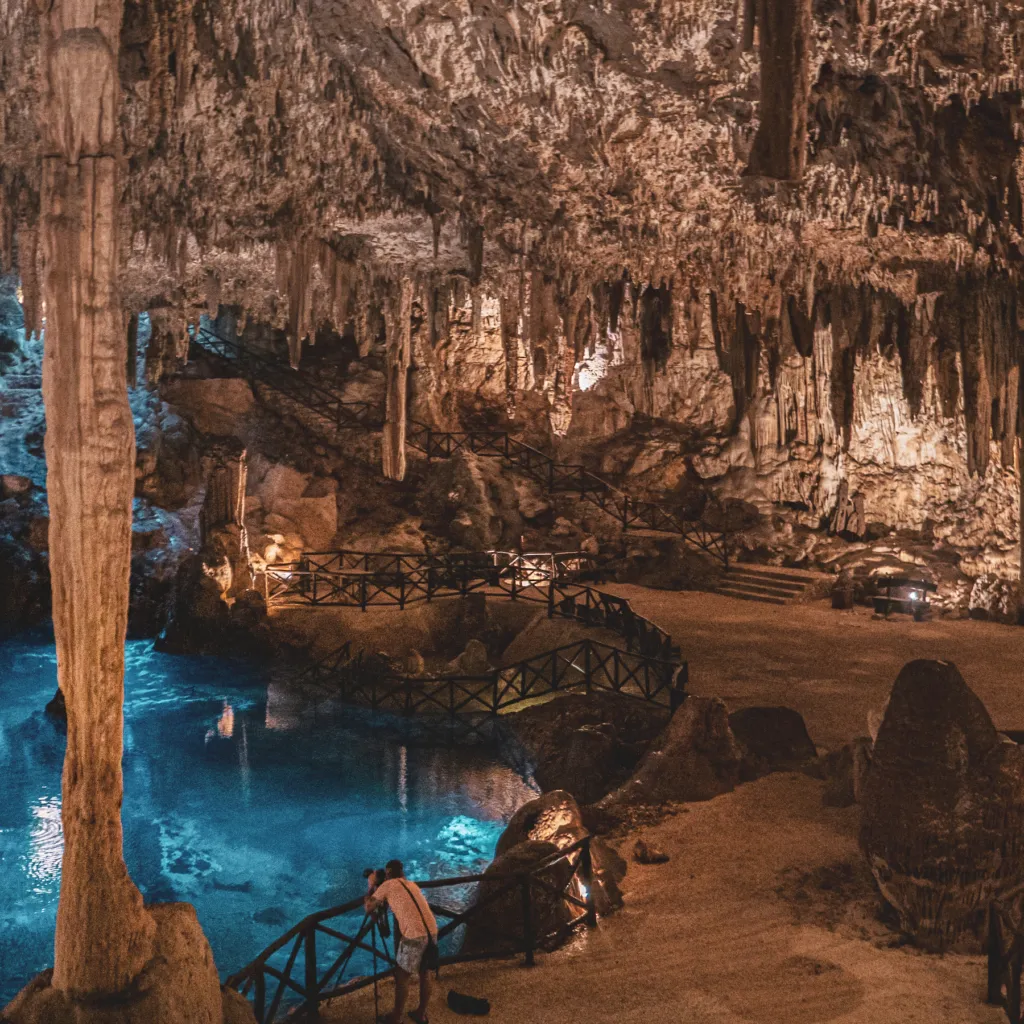La astronomía maya, una de las más avanzadas de la antigüedad, se entrelaza con la majestuosidad de Zazil Tunich como un observatorio natural, ofreciendo un escenario donde el legado estelar de esta civilización cobra vida. En este blog, nos sumergimos en la relación entre los cenotes y la cosmovisión maya, y cómo Zazil Tunich se convierte en un portal para observar y comprender los misterios del cosmos tal como lo hacían los mayas.

Los mayas utilizaban los cenotes como observatorios naturales. Las tranquilas aguas de Zazil Tunich reflejan el cielo nocturno de una forma singular, ya que dentro de la caverna no puede acceder completamente la luz de la luna, lo hace mediante pequeños orificios en la parte central del techo creando un espejo parcial para observar las luz del cielo y los planetas. Este fenómeno permite a los visitantes experimentar la astronomía de una manera similar a como lo hacían los antiguos mayas, conectando con el universo desde un punto de vista sagrado y ancestral.

El calendario maya, intrínsecamente ligado a los ciclos celestes, es un testimonio de su profundo entendimiento astronómico. En Zazil Tunich, se realizan eventos especiales durante fechas clave del calendario maya, como los equinoccios y solsticios, permitiendo a los visitantes vivir la precisión con la que los mayas marcaban el paso del tiempo y aprovechar el observatorio natural que ofrecen los cenotes.
Las constelaciones mayas, ricas en mitología y significado, eran fundamentales en su cosmovisión. Historias de dioses, animales y héroes se entrelazan con las constelaciones que aún hoy se pueden observar desde Zazil Tunich, destacando su papel como observatorio natural. Los guías especializados narran estas historias, reviviendo la mitología maya bajo el manto estrellado.
Ix Chel, la diosa maya de la luna y la fertilidad, tiene un lugar especial en Zazil Tunich. Las fases de la luna eran esenciales para la agricultura y la vida cotidiana maya, y en Zazil Tunich se celebran ceremonias que honran a Ix Chel, especialmente durante la luna llena, cuando su influencia se consideraba más poderosa. Debemos mencionar que Zazil Tunich es el único Santuario dedicado a la diosa Ixchel en toda la península.

Zazil Tunich combina la tecnología moderna con la sabiduría ancestral para ofrecer talleres y presentaciones sobre astronomía maya. Los visitantes pueden usar telescopios para una observación detallada y participar en talleres que explican cómo los mayas desarrollaron sus conocimientos astronómicos.
Te invitamos a Zazil Tunich para una noche bajo las estrellas, donde la astronomía maya se revela en todo su esplendor. Reserva tu visita y prepárate para un viaje astronómico que te conectará con el pasado y te inspirará a mirar hacia el cielo con nuevos ojos.
Haz clic aquí para reservar tu experiencia astronómica en Zazil Tunich. Ven y descubre el legado estelar de los mayas en un lugar donde el cielo y la tierra se encuentran. ¡Te esperamos para explorar juntos los secretos del universo maya!
Este blog es una invitación a mirar hacia arriba y redescubrir la maravilla de las estrellas, guiados por el conocimiento ancestral de los mayas. Zazil Tunich no es solo un cenote; es un puente entre la tierra y el cosmos, un lugar donde la historia astronómica maya sigue viva. ¡Reserva ahora y sé parte de esta experiencia celestial!

$ 32,000
/ por persona

From: $ 25,000
/ por persona

$ 22,000
/ por persona

$ 19,000
/ por persona

$ 14,000
/ por persona

From: $ 1,799
/ por persona

Share:
Today I want to take you to a magical world full of mystery, where legends come to life and ancient tales...

Share:
Hanal Pixán, which in Mayan means ‘food of the souls’, is one of the most emblematic and profound festivities of...

Share:
The Mayan culture, rich in symbolism and tradition, has bequeathed to the world a series of ancestral practices and knowledge that...

